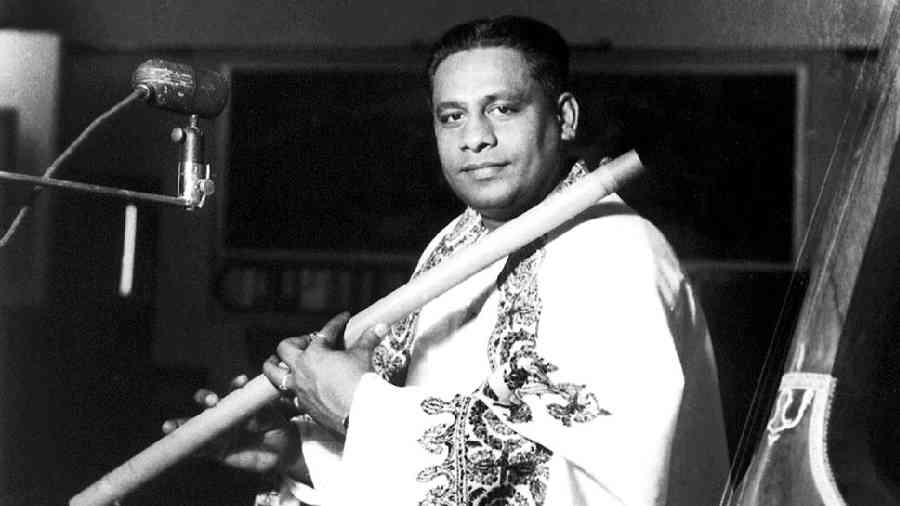Pannalal Ghosh, pioneer of the Indian classical flute, passed away on this day.
Born in 1911 in Barisal (now in Bangladesh), in a musically talented family, he received his first training from his father, who played the sitar. Ghosh was interested in the flute from a very young age. He also became involved in the freedom movement in his early years. In the late 1920s, he came to Calcutta, where he looked for a living, practised boxing, to become a champion, and pursued his passion, music, particularly the flute.
Ghosh wanted to play classical music on the flute and experimented with it to make it more versatile. He worked with different materials and finally chose bamboo and decided that the length of the flute should be 32 inches. Realising the need for meend from madhyam to pancham in some ragas, Ghosh introduced the seven-hole flute, creating the seventh hole or the “teevra-madhyama” hole.
He worked with New Theatres in Calcutta to compose music and met Khushi Mohammad Khan, an eminent harmonium player, who became his guru. Later, Ghosh would go to Bombay and compose music for several films, including Andolan, Sheh Bandhan, Basant with Anil Biswas (his brother-in-law) and Aandhiyan (with Ustad Ali Akbar Khan and Pandit Ravi Shankar). Ghosh’s wife Parul, Anil’s sister, was a playback singer in “talkies”.
Ghosh’s meeting with Ustad Allauddin Khan was a turning point in his life. To be taught by Khan was Ghosh’s dream and it came true when he received taalim for some time from the revered musician. Ghosh was held in high regard by many of his eminent contemporaries, also for the innovations he brought to his performances. He experimented with different elements of music as well as forms of instruments.
He had been appointed composer-conductor of the Indian National Orchestra and producer at AIR, Delhi. His untimely death when at the age of 48 robbed Indian music of a great talent.
